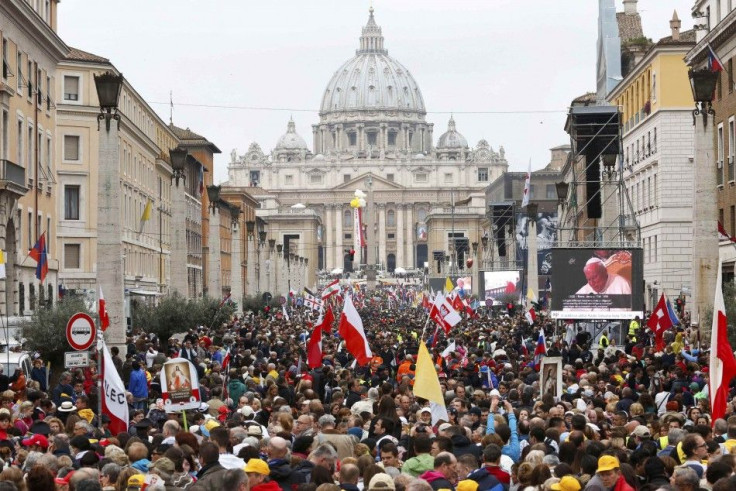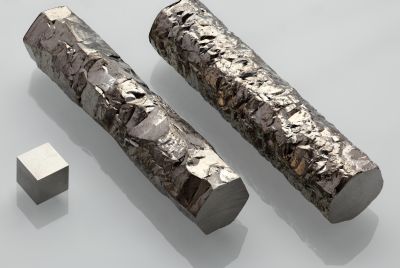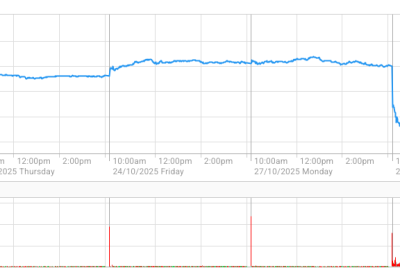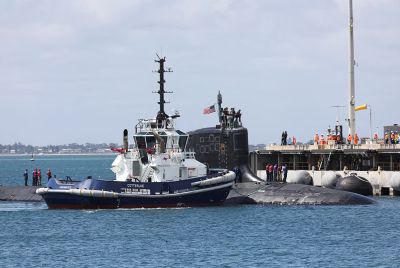As Catholic Church Canonises 2 Former Popes, Question Emerges – Are Saints Still Relevant in Today’s World?

All roads led to the Vatican City on Sunday, April 27, as the Catholic world witnessed the canonisation of two former pontiffs - Pope John Paul II and Pope John XXIII.
About one million pilgrims from different parts of the world have descended into the Holy See, the seat of the Roman Catholic Church, to be part of a historic moment when two leaders of the church are declared saints.
The canonisation rite, which begins at 9 am and is expected to end by 12 noon, Rome time, however, has its share of criticism such as the fast track method to declare John Paul II saint just nine years after his death as well as claims by groups representing victims of sexual abuse by Catholic priests that he did not do enough to address the scandal squarely.
After the big celebration, after the pilgrims have toured the Vatican City and returned to their respective countries, the question weeks after the euphoria have died down is do saints still have a relevance to the modern world.
Save for devout Catholics, who still number in million and believe in the power of saints by praying through these holy people via novenas, other members of the church either link saints to their feast days which are days of celebration in parishes or see them as holy people whose exemplary lives are difficult to emulate in today's world.
Although there are more than 10,000 saints, many people view them as creatures of the past centuries as it takes decades to declare people as saints, so the canonisation of the former Karol Wojtyla - whom many people witnessed because of his travels to 129 nations as Pope John Paul II would help bridge that gap.
The Church also emphasised that contrary to popular belief, saints are not perfect people but persons with flaws but who relied on God's grace.
Quoting Pope John XXIII, CNN cited a writing by the then Angelo Giuseppi Roncalli a year before his ordination, that each saint is "holy in a different way," but the differences enhance instead of detract the value of saints.
CNN also pointed out that the two new saints offer a model of risk-taking based on their strong sense or moral purpose, sticking to conservative teachings of the Catholic Church seen by many as outdated.
It also quoted Augustana College associate professor of philosophy David O'Hara, who said, "It should matter to us when our neighbors announce that they have designated new moral exemplars" which would provide the world ideals, heroes and models for their lives.
Moving without fear was also cited by Claire Noonan, vice president for Mission and Ministry at the Dominican University in Illinois, as the shared characteristics of the two new saints. She pointed to Pope John Paul II's work against communist oppression in Poland and Pope John XXIII's efforts to liberate the church from the fear of modernism.
The New York Times sees the twin canonisation as an opportunity for Pope Francis, whose first 12 months as pontiff was characterised by attempting to erase the divisions within the church, "to deftly avoid elevating one man over the other."
Kathleen Sprows Cummings, director of the Cushwa Center for the Study of American Catholicism at the University of Notre Dame, agreed that "The Catholic Church is big enough to encompass the devotees of John XXIII and John Paul II ... That is the message he is sending."
Read also:
Crucifix Dedicated to Pope John Paul II Crashes to Death Italian Man Posing for Souvenir Photo
A Tale of Two Saints: Popes John Paul II & John XXIII





















